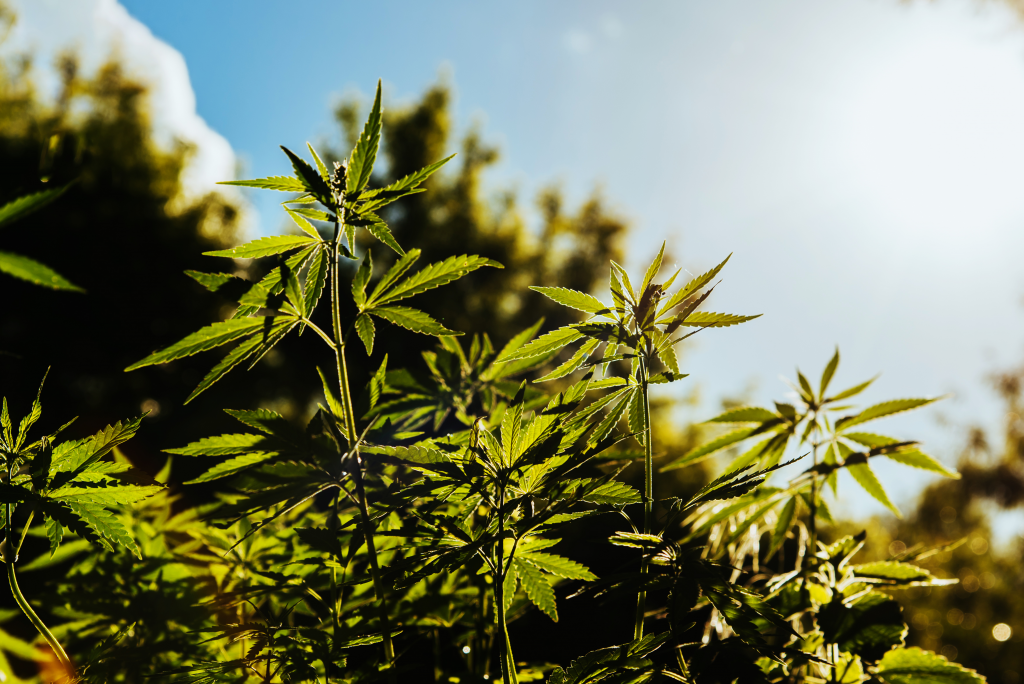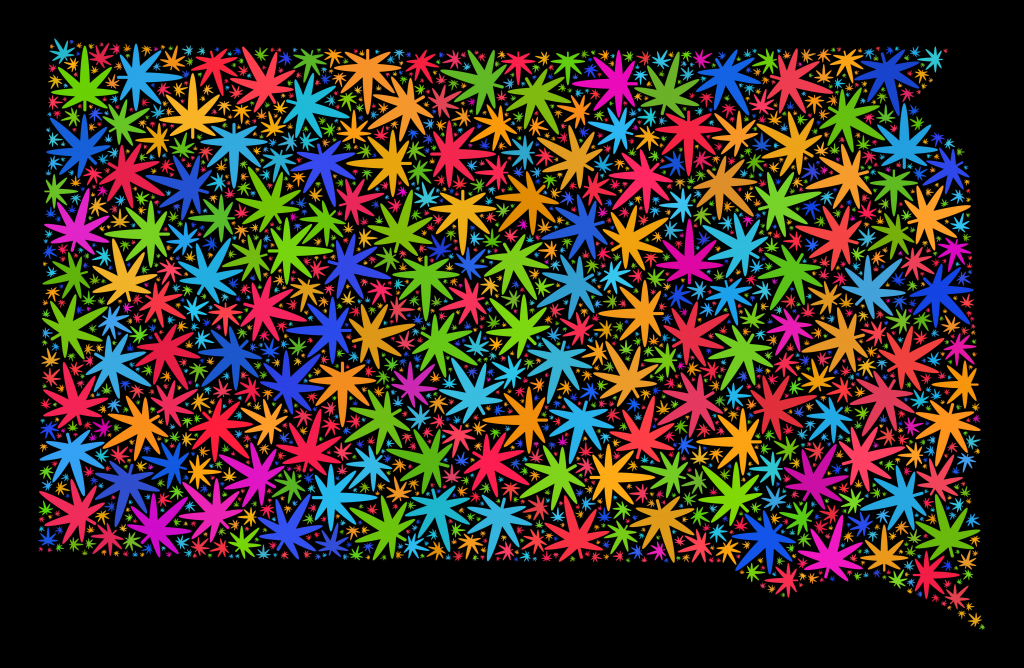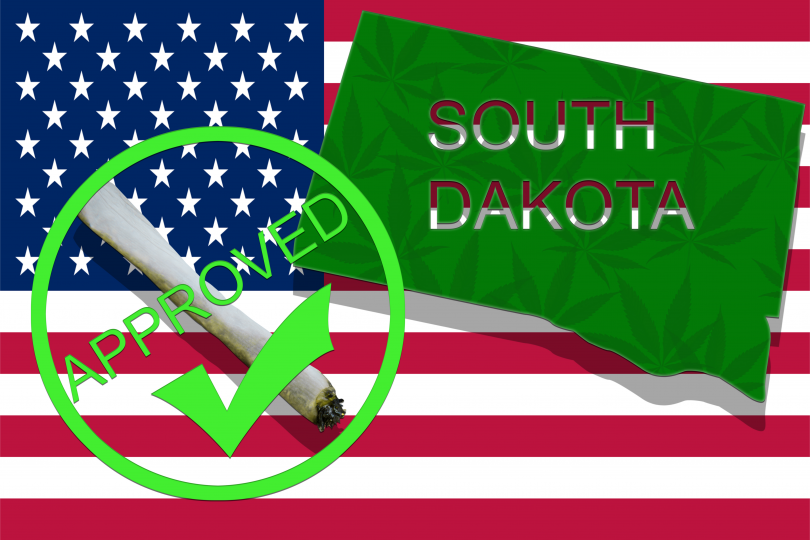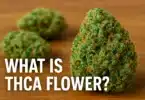The whole cannabinoid issue has gotten more intense now that Shopify has banned anything that violates the law, likely at the behest of the US government. But in some places, it’s understood that regulating might be a better option than making these compounds illegal. Case in point: South Dakota through a new bill, now officially regulates cannabinoids delta-8, HHC, and THC-O-A.
South Dakota just passed a bill that regulates delta-8 and other cannabinoids by age. How the state will account for other issues of additives and processing has not been stated. We are an independent publication covering everything important in the cannabis field, and you can keep current by subscribing to the THC Weekly Newsletter. This will give you access to premiere deals on products like vapes, edibles, and other paraphernalia, as well as offers on your favorite cannabinoid products like HHC-O, Delta 8, Delta 9 THC, Delta-10 THC, THCO, THCV, THCP & HHC, which are in our “Best-of” lists. Remember… *If you do not prefer to use cannabinoid products, we don’t advise that you do. There are plenty of products in the world of cannabis, and each person should only use what they are comfortable with.
What’s the deal with the cannabinoid market?
The cannabinoid market is an entire market that functions federally illegally at the moment, but under some marketing-pushed misconception that the products are legal. And to be fair, they’re not illegal based on their own dangerous capabilities, since none of the cannabinoids themselves have shown danger. They’re illegal simply because the government hasn’t legalized them, and because of this, a strange black market has opened, which, without regulation, has becomes a rather dirty market.
The cannabinoid market is rather new, coming into being as a side-effect of the 2018 US Farm Bill, which specifically legalized the cultivation and production of industrial hemp, and associated products. In order to do this, and separate said hemp from the rest of the world of marijuana, a new definition was instituted for hemp, which came with two main stipulations, though one is not as clearly outright stated.
The first is that all hemp plants, and associated hemp products, must not surpass .3% THC. And the second is that the only thing legalized, are products directly made from the hemp plant, since nothing synthetically-derived fits the definition of hemp. This was backed up by the DEA in regards to a question asked about synthetic delta-8 THC. In its answer, the DEA referenced the definition of hemp, with that definition being:

“The plant Cannabis sativa L. and any part of that plant, including the seeds thereof and all derivatives, extracts, cannabinoids, isomers, acids, salts, and salts of isomers, whether growing or not, with a delta-9 tetrahydrocannabinol [(D9-THC)] concentration of not more than 0.3 percent on a dry weight basis.”
Where do synthetics come in?
At no point does it say that synthetically-derived compounds are okay, and at no point does it say that a product can include hemp-derived compounds, but not be made completely from them. Thus, anything synthetically-derived, also doesn’t fit the definition, and remains under Schedule I. Why? Because synthetics of any Schedule I substance – or its analogues – (including THC), are also Schedule I, and therefore illegal, according to the Federal Analogue Act.
Why is all this talk of synthetics important? Because the cannabinoids sold are always synthetically made, even if its stated that they’re ‘hemp-derived’. This doesn’t mean that compounds like delta-8 and HHC aren’t naturally occurring, however, they occur in such small amounts, that rather than extract them directly from hemp, they are synthetically-derived from compounds like CBD. CBD and THC are currently the only two cannabinoids that exist in large enough quantities to directly use from extraction.
When it comes to compounds like delta-10 and THC-O-A, the ‘hemp-derived’ part is even more ambiguous, as these compounds are only synthetically made, and not found in nature at all. I should be clear here, ‘hemp-derived’ is being sold as a term that means ‘directly from hemp’, as this makes products fit under the definition of hemp. But what it actually means is ‘indirectly from hemp’, or ‘hemp parts used with synthetic processing’, and this no longer fits the definition.
South Dakota officially regulates delta-8 and other cannabinoids
There are two things to consider here. First, these cannabinoids have already created a widespread market. And though it’s a fringe market, it’s still there, online, as well as in brick and mortar stores. I say ‘stores’ and not ‘dispensaries’ because without regulation, these products are sold in tons of places outside dispensaries. The second thing to consider is that the cannabinoids themselves are fine, but the lack of regulation allows for seedy business techniques, dirty and mislabeled products, fake third party testing, and for chemical additives to be used that could be dangerous.
Which makes regulating the market, a much better idea than trying to backhandedly stop it through forcing sales platforms to stop selling products. This is what just happened with Shopify. Different states are making their own regulations for cannabis in general due to changing laws, and this new cannabinoid market is now factoring into new legislation.

In early 2022, The South Dakota House of Representatives initiated HB 1292 which is a bill that regulates cannabinoids delta-8 THC, HHC, and THC-O-A. The bill specifically seeks to set an age limit for sale and purchase of these cannabinoids, restricting anyone below the age of 21 from partaking. The bill doesn’t include anything else besides this idea of regulating their sale by age.
The bill, brought forth by republican representative Rep. Taylor Rehfeldt, first sought only to regulate delta-8, but was then expanded to include HHC and THC-O-A as well. An earlier bill in the session merely sought to outlaw these substances, but Rehfeldt introduced 1292 as an effort to responsibly regulate the substances instead.
Will it pass?
It did! After passing both the South Dakota House and Senate, the bill was signed into law by Gov. Kristi Noem on March 10th. Does this make all delta-8, HHC, and THC-O-A products legal to adults 21 and above? It’s hard to say, especially considering that the biggest issue in the field, is the question of regulating the actual products to make sure they are what they’re supposed to be, and to fit into laws regarding synthetics.
Bill author Rehfeldt admits that there’s more to be done in terms of regulating the industry. In regards to chemical additives, and to deal with these possible dangers, she states: “it will be important to address those issues with all stakeholders including public health, the hemp/marijuana industry, and the business community.” She stipulates that simply starting the process by setting an age limit, is a decent beginning measure.
Currently, the bill is very brief, only accounting for the age a person must be in order to buy these products. There is absolutely nothing in the bill that further regulates these products, or what’s in them. This promotes a lot of new questions. Like, are these compounds regulated the same way as regular cannabis? And, are synthetic versions allowed? And, if so, are there specific processing techniques that must be used? Without anything else said, it means South Dakota is literally promoting the dirty tactics of the cannabinoid industry, and offering no safety to consumers.
Into the future
I have yet to see anything further stated about how South Dakota plans to deal with this issue, though I do expect some sort of follow up. What’s weird about the whole thing, is why such a parse bill would be introduced, and then passed so easily. Perhaps this could be due to two different factors.

First off, South Dakota legalized cannabis in 2020 via a ballot measure (54%), which should have included the state among 19 legalized states. In fact, South Dakota pulled double duty at the November 3rd elections, legalizing both medical and recreational cannabis with Measure 26, and Amendment A, respectively. In what I can only call a horribly corrupt tactic, South Dakota’s governor Kristi Noem conspired with local law enforcement to bring a case forward to invalidate Amendment A. They did this on the grounds that South Dakota only supports single ballot measures. The Supreme Court of the state backed Noem, and the legalization was taken away. Perhaps one reason for the new bill, is that blow-back from the removed legalization has inspired Noem to be a little looser if she wants to keep her seat.
The second thing to consider, is that these cannabinoids are based on hemp, even if they use synthetic processing techniques for the final product. This means the hemp industry wants the products to be legally available, because it spurs on the hemp industry. It has been reported that South Dakota wants to double its hemp-growing acreage, as well as to start fiber and seed processing within state. This is impressive considering South Dakota only legalized hemp production in 2020.
According to the USDA National Hemp Report for 2021, a total of 54,200 acres of hemp were planted in the US, but only 33,500 acres were harvested. This is split into four categories: floral hemp (16,000 acres), fiber hemp (12,700 acres), grain hemp (8,255 acres), and seed hemp (3,515 acres). Hemp grown under protection is technically another category as well (358 acres). South Dakota came in 8th place with 1,850 acres planted, but had the highest harvest rate of any state with 1,700 of those acres harvested.
Of those 1,700 acres harvested, over 1,500 were dual purpose plants that can be used for both grain and fiber, which are harvested separately. South Dakota Industrial Hemp Association executive director Katie Sieverding used the report to ascertain that the value of South Dakota’s crop was $1,789,000 for grain hemp and $480,000 for fiber hemp in 2021.
When it comes to regulation, all hemp is regulated the same. And this is probably because, while there is differentiation in how the seeds are planted, and the processing methods after, all forms can produce CBD, except for seeds. So it’s quite possible that this new and growing hemp industry, also played a major role in South Dakota and its recent bill that regulates delta-8 and the cannabinoid market. A market which relies heavily on CBD, and therefore, hemp.
Conclusion
South Dakota is definitely promoting its newly won hemp industry, and the state is probably a little angry from having its voted-in recreational cannabis legalization taken away. How much these issues factor into South Dakota passing a law which regulates cannabinoids like delta-8, is hard to say. But the one thing for sure is, South Dakota certainly opened that door, and we can only speculate as to next moves.
Welcome everyone! You’ve arrived at CBDtesters.co, the penultimate web spot for the best and most comprehensive independent coverage of cannadelic, cannabis and psychedelics news. Give the site a read-thru frequently to stay on top of the exciting universe of cannabis and psychedelics, and sign up for The THC Weekly Newsletter, to keep up on all the industry talking points.
Disclaimer: Hi, I’m a researcher and writer. I’m not a doctor, lawyer, or businessperson. All information in my articles is sourced and referenced, and all opinions stated are mine. I am not giving anyone advice, and though I am more than happy to discuss topics, should someone have a further question or concern, they should seek guidance from a relevant professional.







